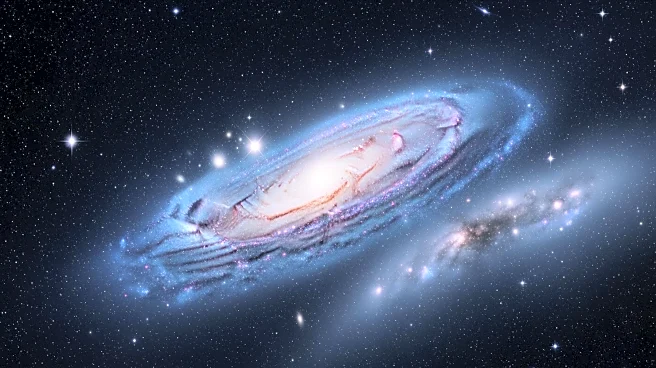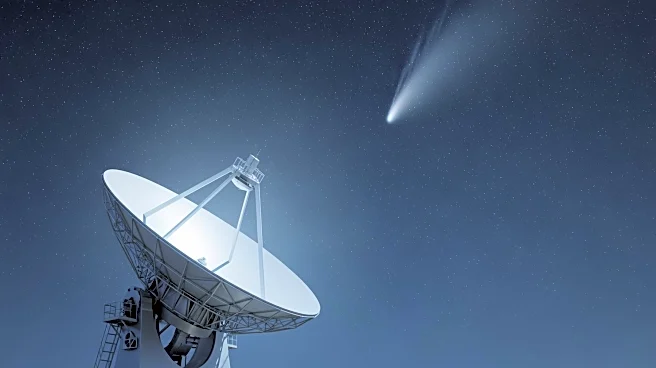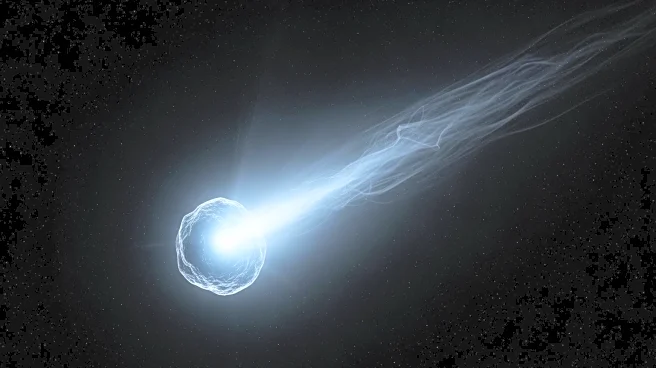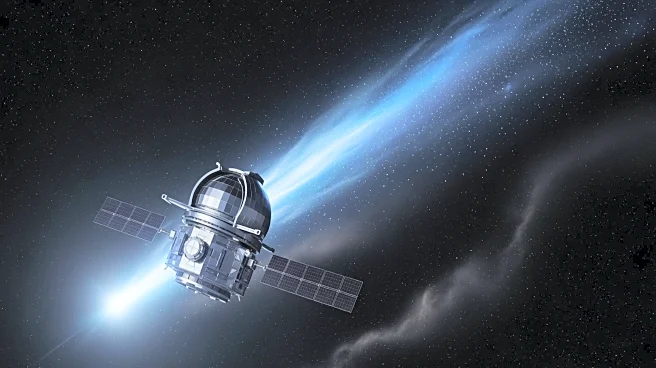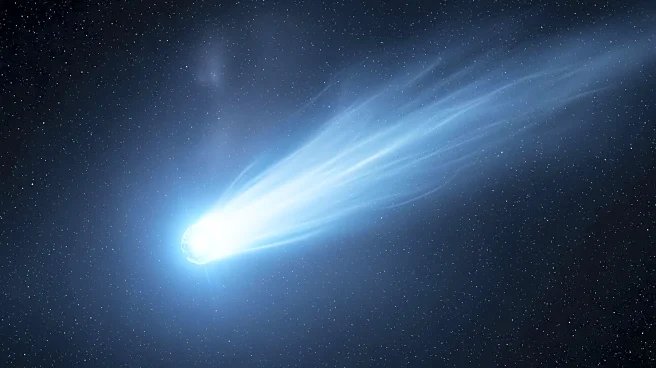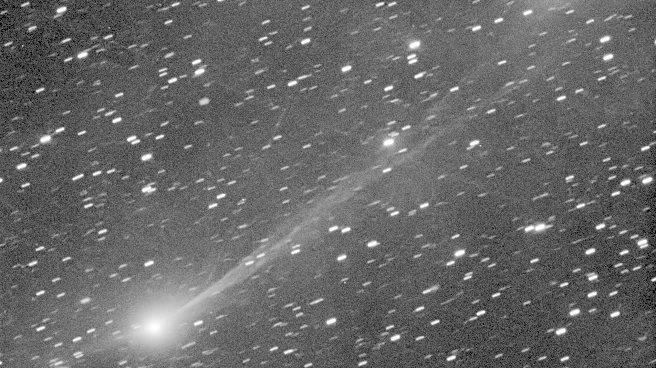What's Happening?
NASA's Hubble Space Telescope has captured an image of the galaxy NGC 2775, which presents a challenge in classification due to its unique features. Located 67 million light-years away in the constellation
Cancer, NGC 2775 has a smooth, featureless center resembling an elliptical galaxy, alongside a dusty ring with patchy star clusters akin to a spiral galaxy. This combination of features has led some astronomers to classify it as a lenticular galaxy, which shares characteristics with both spiral and elliptical galaxies. The galaxy's appearance may be the result of past mergers with other galaxies, as suggested by a tail of hydrogen gas extending around it. This new image includes observations of red light emitted by hydrogen gas clouds, highlighting areas of star formation.
Why It's Important?
The study of NGC 2775 provides valuable insights into galaxy formation and evolution, particularly regarding lenticular galaxies. Understanding the processes that lead to such unique structures can help astronomers piece together the history of galaxy interactions and mergers. This knowledge is crucial for developing models of cosmic evolution and understanding the dynamics of galaxy clusters. The observations made by Hubble contribute to the broader field of astrophysics by offering a detailed look at the composition and behavior of galaxies, which can inform future research and exploration missions.


